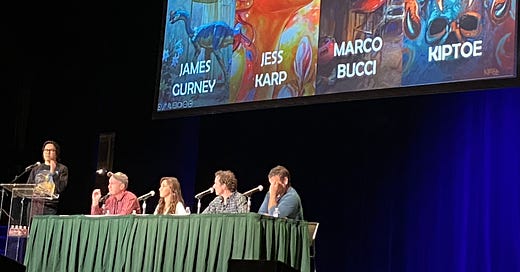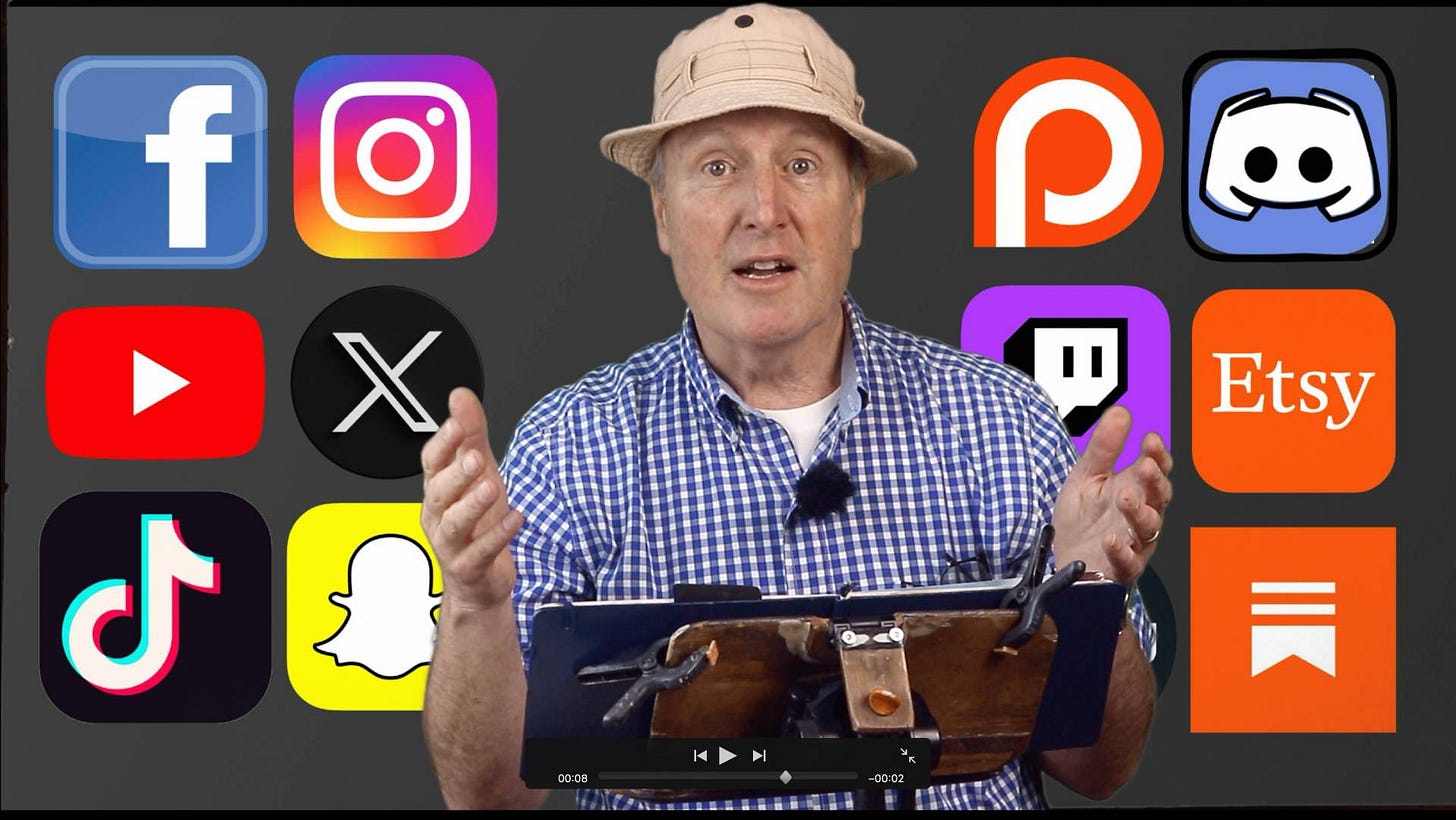Breaking into the Art Industry
How do you make a living as an artist in these turbulent times?
At Lightbox Expo last weekend, I talked with a lot of young artists who were eager to find their place in the art world. In this post I’ll try to answer some of their questions.
Could you give three tips for new artists trying to break into the arts industry?
1. If you put together a portfolio, show only your best work——eight pieces at the least and sixteen pieces at the most. Start and finish with your best pieces.
2. Don’t rely solely on electronic media to make contact with people in the business. Try to meet the art buyer. Go to conventions. Take workshops. And don’t overlook mailing traditional paper letters and printed leave-behinds. Since so few people do it these days, you might get your work up on someone’s bulletin board.
3. Always express a can-do attitude. On your first job, do twice as good a job as anyone would expect, and deliver it early. Make every published work your very best, regardless of the deadline or the budget.
What advice would you give to artists who are struggling with or lose motivation with their craft due to lack of work?
If you go through dry spells where not much work comes in, don’t worry. Everyone struggles from time to time, and it’s part of being a freelancer. Every professional I know (including me) has had to reinvent himself or herself several times throughout their careers. And in the current turbulent times, there’s not a lot of job security with paid positions. Staff artists will get laid off, too. The key is to try to put money in the bank when you have good times, and learn to live frugally when no money is coming in.
Use the down time to develop new skills or hone your portfolio. You must be flexible, doggedly persistent, and never lose hope. Desire and application are more valuable than talent. Remember to consider the possibility that the reason you’re not getting that ideal job is that your stuff honestly isn’t good enough yet. Too much confidence is more of a problem than too little. If you keep working to make your art better, you will find your place.
All areas of the arts industry are extremely competitive. What advice could you give to new artists to make them stand out? Should I develop a unique style?
Some parts of the arts industry are more competitive than others. For example, fewer people think of scientific illustration or toy design compared to movie concept art. And within the field of concept art, many more people try to break into character design than environment design.
A lot of young artists are worried about developing their personal style. It’s OK to think about style, but it’s important to be able to draw nature faithfully and express visual ideas clearly without calling attention to style. For many art jobs you’ll be called upon to match someone else’s style, and to do that you’re better off with a wide-ranging set of basic skills. Too often art schools push young artists to develop a distinctive style before they’ve even begun to master the basics of perspective, anatomy, color, and light.
If you want to develop a unique style, expand your range of influences to include art that no one else is looking at. Don’t copy what everyone else is doing. Your style will emerge naturally, like the way you laugh.
Since you dropped out of art school, how did you learn about making realistic images?
I’ve always been interested in making realistic images of scenes that couldn’t be photographed, such as monsters, spacecraft, and dinosaurs. That has led me to pursue plein-air painting and sketching alongside purely imaginative work. They weren’t teaching this information in art school back in my day, though some schools are beginning to now. I got memberships in the zoo and the natural history museum and drew there every chance I could. I combed the library to find books about Golden Age illustrators and academic painters.
A century or more ago, “imaginative realism” (that is, painting mythology, history, and Biblical scenes) was considered mainstream art, and art schools were set up to teach it. Digging out this information took a bit of sleuth work and research before the days of the internet. I learned everything I could about the methods of artists such as Lawrence Alma-Tadema, Howard Pyle, Norman Rockwell, and Tom Lovell. Life is better now for hungry students: the information is available online and in books, more schools are teaching it, and magazines like ImagineFX have come along to fill the void and deliver the gold.
Can you give some practical advice for developing a career path for illustration and animation that bypass traditional gatekeepers?
Keep reading with a 7-day free trial
Subscribe to Paint Here to keep reading this post and get 7 days of free access to the full post archives.






